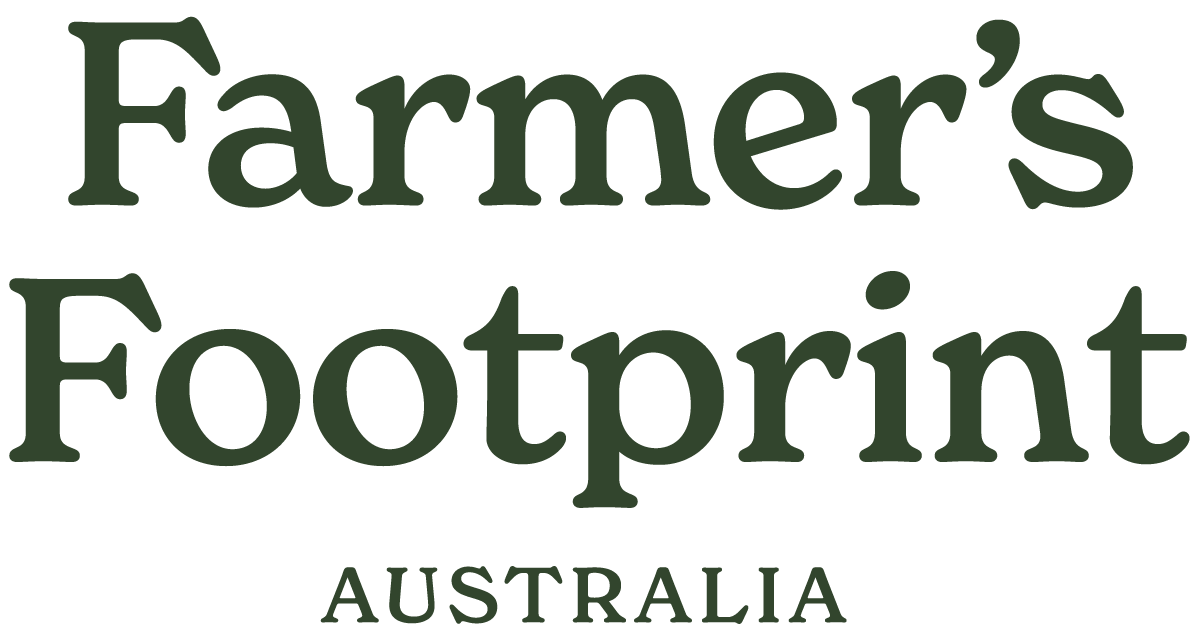Farm Yarns
Forage Farms

It’s an inspiring thing when you visit a family farm. Stepping onto the sprawling expanse of Forage Farms in Kybong, QLD, we were immediately immersed in a living narrative of agricultural legacy and sustainable stewardship. The Andrews family, comprising Stuart, Megan, and sons Hamish and Lachlan, are the custodians of this thriving landscape, where the principles of Natural Sequence Farming (NSF) have become the linchpin of their success.
The story behind Forage Farms begins in the Bylong Valley where three generations of Andrews have lived on ‘Tarwyn Park’ the celebrated home of Natural Sequence Farming, as developed by Stuart’s father Peter Andrews. For over 40 years the family has been dedicated to understanding, practising and teaching methods of land rehabilitation. Natural Sequence Farming is used as a system of farming focused on implementing natural landscape functions back into degraded landscapes.
The Andrews’ commitment to mindful land management is obvious here, with the lineage of Peter Andrews serving as a guiding force. The farm, brimming with vitality, is not just a production hub but a testament to the seamless integration of tradition and innovation. As the Andrews family work as a cohesive unit, there is a tangible sense of hope that their legacy of sustainable agriculture will endure for decades.
Forage Farms stands as a thriving example of diversified livestock operations, incorporating pork and beef to create a symbiotic relationship that builds both healthy landscapes and nourishing food for the region. Stuart Andrews, armed with profound insights from NSF principles has harnessed the power of natural cycles, leaving an indelible mark on the landscape’s functionality.
We spoke to Stuart about the challenges of running a multi-faceted operation as a close-knit family and the hopes he has for both NSF and Forage Farms into the future.
Can you talk about the origin story of Forage Farms?
To answer that we need to first give context to what came before Forage Farms. Tarwyn Park Training, located in Mount Marsden NSW, began it’s journey in 1974 when our family moved to a run down and seriously eroded former horse stud, Tarwyn Park. My father Peter Andrews knew that this same landscape provided all the answers if we just stopped and observed how it operated. This understanding of landscape function became known as Natural Sequence Farming, a system in which land stewards manage their landscapes in symbiosis with the natural sequences present in the landscape.
Tarwyn Park Training was established in 2012 as a way of developing a training program to help deliver Peter’s knowledge of landscape function, hydrology and restoration. A big part of that course focused on the concept “Let all plants grow” and so people naturally asked, “I can see how letting all plants grow makes sense, but if I have a place that is growing predominately weeds then how do I make a living?”. That’s a fair question. So we ask ‘what sort of production system can we put into a landscape that isn’t ready to run cattle or sheep?’ and ‘what production system can we develop that is financially rewarding?’ The other factor that spurred Forage Farms into existence was the necessity for us to be able to communicate with consumers and the only way you can do that as a farmer is to sell directly. So that’s why Forage Farms began.

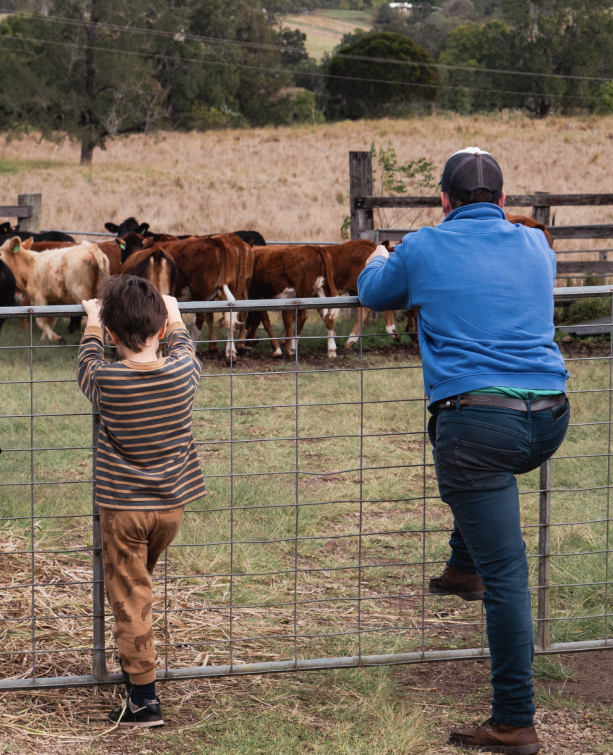
What is Natural Sequence Farming and how has your journey with it influenced your farming operation?
‘Natural’ is following nature, using nature as the guide.
The ‘Sequence’ is a sequence of events stimulated by rainfall; initiating the processes that support plant growth.This sequence is critical. As the plants reboot they kick start the hydrology and contribute to rebuilding the landscape. Everything is driven by plants and water.
‘Farming’ is overlaying a production system on that natural landscape. Predominantly farmers will come onto a piece of land and say “This is what I am going to do, I’m going to run cattle for example. We don’t ask the landscape what it is capable of doing. So, with Natural Sequence Farming (NSF) it’s the reverse.We look at nature and t its natural patterns and learn what the landscape is capable of doing today and what it could potentially do in the future. Our plans of running cattle may not happen today because the landscape isn’t ready but NSF can help us to determine what could be possible in the future.
NSF is the driver of everything we do in our farming operations and the platform from which we work.
The secret of a healthy egg begins with a healthy landscape. If you can provide a healthy landscape, no matter the production system, you are going to produce a top-quality product.
How do you balance the commitments of Natural Sequence Farming education and Forage Farms responsibilities?
It can be difficult to get the balance right. We rely on teams so that everyone knows that role they have to play that helps us achieve what we need to achieve. Megan & I work in both businesses, with my son Hamish also, while Lachlan works mainly on the farm at Forage. We are still in the midst of growing the team at Tarwyn Park Training, however we have people in three states that help us with the courses and offer mentoring and support for our course participants. All of this comes together through a great work ethic. We tend to be a very hard-working family and we put our nose to the grindstone and crack on.

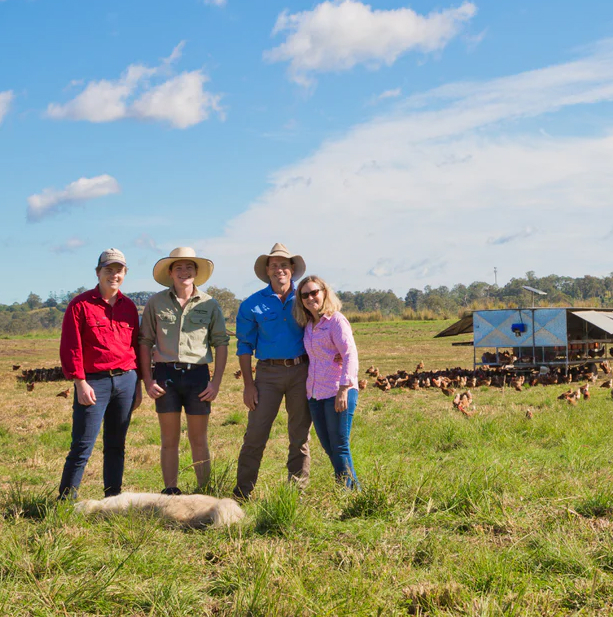
How is succession planning part of the Forage Farms story?
When Forage Farms was just starting, I trained-up Hamish to take a leadership role in the training business so that I could focus on the Farm. When Lachlan finished school, Hamish was able to oversee his training. Now Lachlan is in a leadership role in Forage Farms and I also trained him to do machinery work for Tarwyn Park Training.
This internal training model doesn’t only apply to our family, the same ethos applies to the team at Forage. Everybody has the opportunity to train somebody else and if they want to move into another position they need to train their successor.
I guess we see ourselves as a training organisation, not just through Tarwyn Park Training but also through running a multi-layer food production farm.
What is the secret to keeping a healthy family dynamic when working together on the farm?
We think the most important thing is communication. It might not always be easy and on occasion people can get frustrated, but either way we talk about issues and work our way through things.
Communication is key as we live and work together. We have always been a very close family; we sit down at the table for every meal and we have done that since the boys were little, so communication is central to everything we do.
Humour also plays an important role. Not taking things too seriously and having a bit of a laugh breaks the tension. It helps that we have a couple of stirrers in the family (Lachlan and I) as it tends to lighten things up. This is the same with the farm team. There are going to be difficult times, but we always look for the funny side of things. Megan and I also step away from Forage Farms for periods of time throughout the year doing training courses and field days, so the boys get their own space while we’re are away and that helps too. Unlike a lot of family farms when the patriarch is constantly there overseeing the farm, I’m very happy to stand aside and let the boys make decisions, learn from mistakes and only steps in if an issue arises or advice is needed.
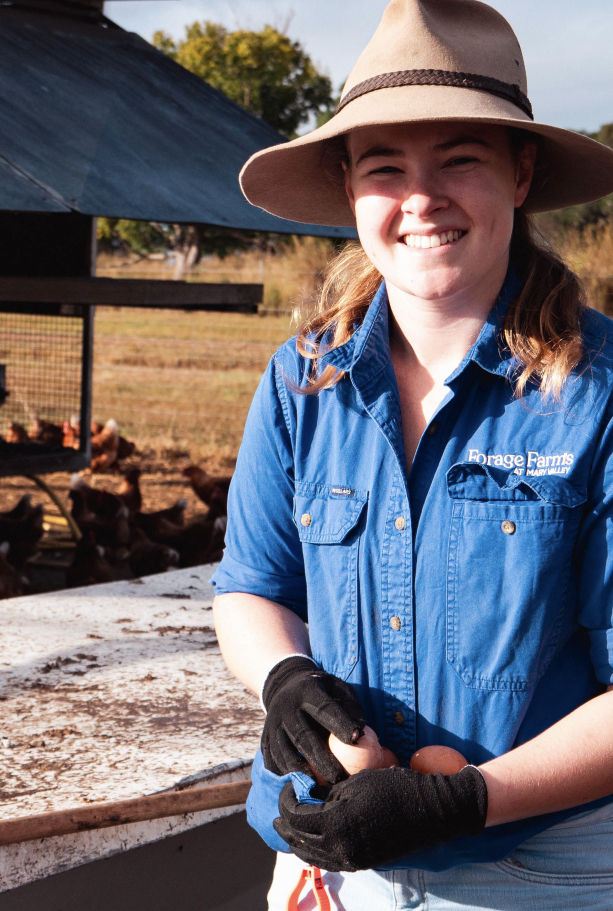
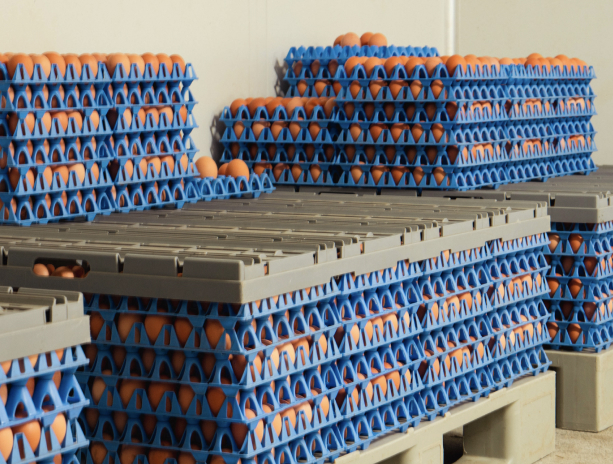
What is the secret to a healthy egg?
The secret of a healthy egg begins with a healthy landscape. If you can provide a healthy landscape, no matter the production system, you are going to produce a top-quality product. The next element is the diet of the chicken, some of that will be related to the landscape, but because chickens are omnivores, they require grain. Therefore, trying to ensure that they have a quality grain source and added supplements. Pasture diversity in the paddock is also important which goes hand in hand with a healthy ecology, i.e. bugs and grubs. Our chickens have access to a free choice of minerals, and they know best so we leave it to the chicken to decide. That’s the secret. If you have happy healthy animals living on a healthy landscape, they will produce a healthy product for people to eat.
While people should have a choice, they should also know the impact on the landscape, the environment and the chicken when we produce eggs from a chicken in a shed. The consumer needs to be able to make an informed choice.
Can we transition large scale egg production to regenerative methodologies? If so, what are some of the steps to making this possible?
Yes, it is very possible to transfer all our shedded chickens to be pasture operations, however, it will require more land. To be feasible we would need a lot more smaller operations where eggs are only a part of the business. This would require consumers to be onboard as there would be a lot more labour involved and therefore the cost of the egg would be higher.
There will probably always be a place for the more industrially produced eggs, simply because our population is always growing and there will always be people who can’t afford a more expensive product. While people should have a choice, they should also know the impact on the landscape, the environment and the chicken when we produce eggs from a chicken in a shed. The consumer needs to be able to make an informed choice and within this is a role for all the different production systems.


What does diversity look like in your business?
Diversity in our business starts with the landscape – diversity of plants. Overlay that with a diversity of animals and a diversity of people, in that we want people from all different backgrounds bringing different ideas.
Getting all these things functioning is not easy but it is key.
We have always used the term ‘aggrading’. Aggrading your landscape which is the opposite of degrading.. As long as the landscape is aggrading and increasing in green surface area you will be increasing soil health and regenerating the landscape.
What does Forage Farms look like in 5 years?
In five years, Forage Farms will be flowing a lot more smoothly. We are predominantly an egg production business with smaller components of other layers. Within five years we would anticipate that our meat chicken, beef, and lamb production will have increased. We will have a meat cut up facility and a commercial kitchen on site, so we are able to cut up our own products as required and therefore can value add and cut back on waste. So eggs that don’t make the grade (dirty, cracked, misshaped etc.) can be pulped. We could offer stock or ready made meals. The opportunities are endless, it’s just finding the funds and the people to run it. The more people you have working in the team the better the team works because you have greater diversity and therefore the opportunity for people to work in different areas of the business, avoiding boredom which is very important.


What does regeneration mean to you?
Regeneration means getting a landscape functioning. The basis for everything we do is maximising green surface area as much as possible. That’s not always easy depending on your production system. With chickens you can maximise your green surface area by having lots of trees but then the trees add another layer that’s not so positive with chickens because the chickens congregate under the trees and lay eggs under the trees.
As a direct result of having more green surface area for a longer period throughout the year then you are going to be storing more carbon and building more organic matter therefore your ability to store more water in the soil is going to increase. Concentrating on your hydrology, which is what we do in NSF, is another critical component of regenerating. We have always used the term ‘aggrading’. Aggrading your landscape which is the opposite of degrading.. As long as the landscape is aggrading and increasing in green surface area you will be increasing soil health and regenerating the landscape.
Support empowered storytelling
Your support helps us accelerate the transition to a regenerative farming future.
